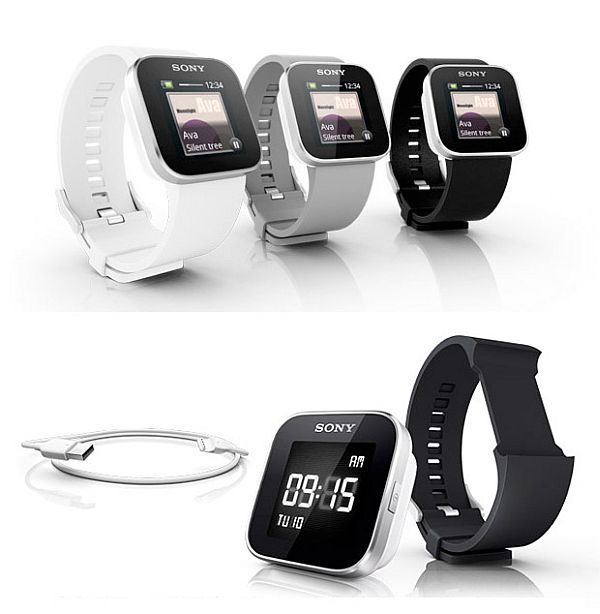So, faced with becoming little more than a dusty museum piece, perhaps it was inevitable that watches — like phones, coffee makers, refrigerators, automobiles and even entire houses — would become “smart,” i.e., equipped with microprocessors, software and wireless connections that allow them to perform all sorts of functions beyond the one for which they originally were intended.
It’s unclear who first came up with the idea of turning the watch into a tiny computer with communications and networking capabilities. In the late 1990s, Swiss watchmaker Swatch and Dutch electronics giant Phillips tested a watch equipped with a radio-frequency identification chip that enabled it to pay subway fares and ski-lift fees [source: Taggart]. One of the first multi-featured devices may have been a wristwatch-sized computer equipped with both a touchscreen and a microphone for voice-activated apps and communicating, developed by Chandra Narayanaswami of IBM back in 2000 [source: Eisenberg]. In 2003, watchmaker Fossil, Microsoft and handheld computer maker Palm teamed up to develop the SPOT (Smart Personal Objects Technology) watch, a device equipped to wirelessly receive stock quotes, send and receive instant messages and do other stuff that seemed utterly cool at the time [source: McHugh].
Since then, we’ve seen the advent of vastly more powerful, sophisticated smart watches. One of the newest, the $149 Sony SmartWatch, is designed to do a lot of the things you count on your smartphone to do, such as accessing your digital music collection and keeping you plugged in to social networks. Better yet, it can do those things without requiring you to reach into your pocket or dig through your purse — which may be one big advantage that wristwatches still have over phones [source: Sony.com].
What makes the Sony SmartWatch smart?
With its touchscreen display and icons, the Sony SmartWatch looks a lot like a really, really small Android smartphone. It’s just 1.42 inches by 1.42 inches (3.6 by 3.6 centimeters) across, 0.3 inches (0.7 centimeters) in thickness, and weighs 0.55 ounces (15.5 grams) (somewhat less than the band to which it’s attached) [source: Sony.com].
But while the SmartWatch lacks heft, it also demonstrates just how far the state of the art in miniaturization has come. While Sony doesn’t disclose much about the hardware inside, the gadget-hacking Web site CMW, which dismantled one of the watches, reports that it sports a CPU that runs at 120 MHz, 128 kilobytes of RAM, and a full megabyte of flash memory for storage [sources: Murph, CMW]. That’s more electronic muscle than some laptop computers had a couple of decades ago, and it enables the SmartWatch to run a stripped-down operating system that’s compatible with Google’s Android OS for phones, release 2.1 and up [source: Sony].
That last part is crucial, because when you aren’t using the SmartWatch to check the time, it essentially functions as a Bluetooth-equipped peripheral add-on to your Android phone, piggybacking on the latter’s wireless Internet connection. For some functions, such as music, it acts like a remote control, sifting through the phone’s multiple gigabytes of storage to select and play songs. When the phone rings, you also can use the watch face to check who’s calling you, and then — provided you’re also wearing a Bluetooth earpiece and microphone — you can even answer the call without taking the phone out of your pocket or handbag [source: Olivarez-Giles].
For more Detail: How the Sony Smartwatch Works

